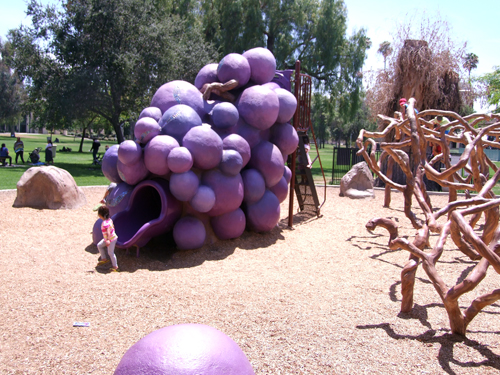
By Donald H. Harrison
-Second in a Series–

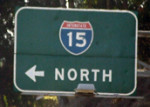 ESCONDIDO, California –This city’s downtown Grape Day Park is easily identifiable by a play area which features a children’s slide coursing through a large sculpture depicting a bunch of grapes. Large “vines” nearby provide more places for children to climb and frolic. Along one side of the park are vintage buildings from the late 19th and early 20th centuries in which the lifestyles of early Escondido are depicted. There is also a former Santa Fe Railroad depot, which today houses a model train exhibit depicting the railroad that once was Escondido’s commercial lifeline.
ESCONDIDO, California –This city’s downtown Grape Day Park is easily identifiable by a play area which features a children’s slide coursing through a large sculpture depicting a bunch of grapes. Large “vines” nearby provide more places for children to climb and frolic. Along one side of the park are vintage buildings from the late 19th and early 20th centuries in which the lifestyles of early Escondido are depicted. There is also a former Santa Fe Railroad depot, which today houses a model train exhibit depicting the railroad that once was Escondido’s commercial lifeline.
How did this charming historical park, located two miles east of Interstate 15 on the North Broadway extension of State Route 78, come about? The answer goes back to a Jewish merchant by the name of Sigmund “Sig” Steiner, who opened the first general store here in 1886. Eight years later he was elected to the city’s Board of Trustees—a forerunner to today’s City Council—and served for 12 years as president of that governmental body. His position was equivalent to that of today’s mayor, and Escondido had no greater booster.
Throughout the west, stories are common about early merchants who formed chambers of commerce and did what they could to bring attention and more business to their towns. Steiner was one of the most enterprising of such pioneers. Having clerked in San Diego for five years with his uncle Sam Steiner’s wholesale business, then called Steiner, Klauber & Co., Sig Steiner well understood how goods from around the world got to small towns like Escondido. He likewise comprehended the cyclical nature of an agricultural economy, and made his store an invaluable link in the distribution chain.
Steiner, Klauber & Co. imported most of its non-perishable goods from the Port of San Francisco, bringing cargo down to San Diego by coastal steamer. It then sold a great variety of items to general stores throughout Southern California, including one co-owned by Sig Steiner and P.A. Graham.
_________________________
Jewish stories along Interstate-15
_________________________
Most of the customers of these small general stores were farmers, who got paid for their crops only after they were harvested. In the meantime, they needed credit to purchase the necessities of life, so Steiner and Graham extended that credit in the form of “store money. ” An outgrowth of credit arrangements like these was the creation by Steiner and others of the First National Bank of Escondido.
Escondido grew thanks to an east-west Santa Fe Railroad spur line connecting it to the Oceanside, which had a depot serving the north-south line running between San Diego and Los Angeles. Known for its agriculture, the inland city of Escondido shipped to coastal Oceanside great quantities of grapes, citrus and avocados. Muscat grapes from Escondido were particularly well known for their sweetness.
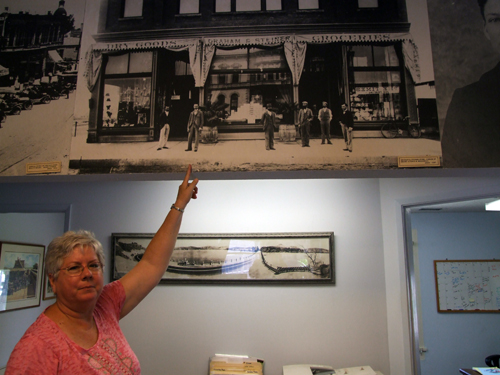
Graham & Steiner replaced the original one-story wood store with a two-story brick structure in 1895, a year after Steiner was elected to the city Board of Trustees. A general store remained on the bottom floor, but on the floor above was a meeting space that was subsequently used for all manner of civic, social and fraternal events. As many as 500 people could be seated theatre style. Steiner, the popular host, had found a way to keep himself in the center of the action. Could any politician ask for more?
Until 1906 when he retired from the Escondido Board of Trustees, Steiner served for 12 years as its president. In 1895, his initial year on the board, the Escondido Irrigation District completed construction of a dam on the San Luis River, creating Lake Wohlford to the northeast of downtown. However, city residents struggled to pay off the bonds until discounts were arranged. When the city’s bonded debt was thereafter retired, it was a cause for a major celebration and bond-burning ceremony over which Steiner presided. It was held on September 9th, California Admissions Day, which was a legal holiday.
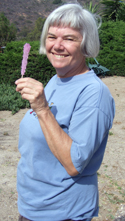
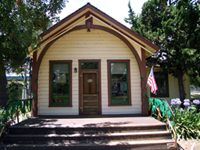
So heartily did Escondido residents enjoy the celebration that they decided to stage annual “Freedom Day” civic celebrations in the same park, which was attached to the Lime Street School. (The name of Lime Street subsequently was changed to Broadway.) In 1908, Steiner, aware that other cities were promoting themselves with events touting their agricultural products – like the Rose Parade in Pasadena – suggested that the annual “Freedom Day” festival be renamed as the Grape Day Festival in honor of one of Escondido’s most valued agricultural products. The idea was enthusiastically adopted.
As one might imagine, the Grape Day Festival celebrated grapes as well as other local agricultural products. Attendees are offered an opportunity to take off their shoes, roll up their pants legs, or hitch up their skirts, climb into a vat, and stomp the grapes. As enthusiastic as the stomping is, “nobody wants to drink what is left,” Robin Fox, a business manager and educator at the Escondido Historical Center, wryly observed. Fox works inside the small, geometrically-instructive building that in 1895 became Escondido’s first public library. Located on the rim of Grape Day Park, it is today a storehouse of historical photos, including one showing Steiner standing with other residents outside his general store.
As Admissions Day is no longer universally observed as a holiday in California, the city decided to change the date of the Festival to the Saturday following Admissions Day. “They have a parade , vendors, activities for kids, demonstrations, all day entertainment,” Fox said. “It’s a fun day, although it sometimes tends to be kind of hot in September here.”
Among items for sale at Grape Day Park is old fashioned rock candy –crystallized sugar on a stick—made in a variety of flavors, including, you guessed it, grape.
One of the places where the rock candy is sold is the old train depot, which has on a siding a railroad car that has been converted into a model train museum. In H0 scale, which is approximately 1:87, a model train continuously travels within a case taking up approximately three-quarters of the railroad car. The fixtures and scale model buildings alongside the tracks represent the topography and landmarks along the old Oceanside to Escondido spur line. Docent Dick Smith explains that for the most part that railroad simply carried freight to Escondido and agricultural products back to Oceanside. There was a U.S. mail car, he said, where a few seats for passengers were provided.
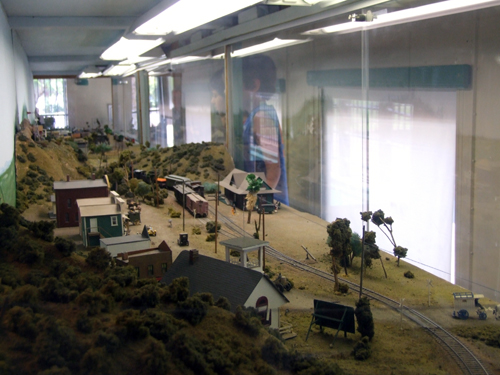
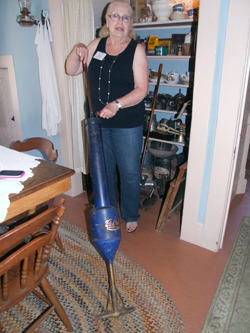
Besides the library and the train station, other historic attractions include a blacksmith shop, a barn and a 1,700 square foot farmhouse where the first Lutheran minister in Escondido, Rev. William Hoffman, and his wife Emma raised eight children. Here one can get a feeling for the types of goods that Steiner sold from his store. Docent Cheryle Sanders pointed out candlestick holders and kerosene lamps used in the evenings before Escondido had electricity. In the kitchen there were a sausage maker, waffle iron, an apple peeler, meat grinder, butter churner, and a coffee mill. Also, she noted, “they didn’t use measuring cups or spoons, they used a scale” when following recipes.
She pointed inside the pantry, where there were various canned vegetables and mason jars. “This is pre-refrigeration,” she said. “It’s called a California cooler. On the bottom there would have been a screen open to the ground underneath. Cool air would come up to cool what was stored here.”
“What do you think this is?” asked Sanders as she held up a device that looked somewhat like a modern toilet plunger. “It’ an agitator to wash clothes by hand,” she self-answered. Well supplied with the conveniences of the early 20th century, the home also has scrub boards, a sweeper, and a vacuum patented in 1910 that works by suction, instead of electricity.
A sail-shaped building next door to the farm house is an old “tank house” which was built over a well. Inside, the water would be pumped up to the top of the building, from which buckets could be filled by gravity flow. The farm house also utilized an outhouse for toileting, but this was not part of the exhibit.
As I toured the buildings and my grandchildren and one of their friends enjoyed the grape and vine playground, an ice cream truck playing old tunes –some of them possibly dating back to the days of Sig Steiner – came alongside on Broadway. For a moment, my heart sank because one of the boys keeps strictly kosher and I was afraid there might not be anything for him. But on the side of the ice cream truck were photographs of its various offerings and on each of these photographs was the U-D symbol for kosher dairy.
It made an excursion into Jewish history even more pleasurable.
*
Harrison is editor of San Diego Jewish World. He may be contacted via donald.harrison@sdjewishworld.com